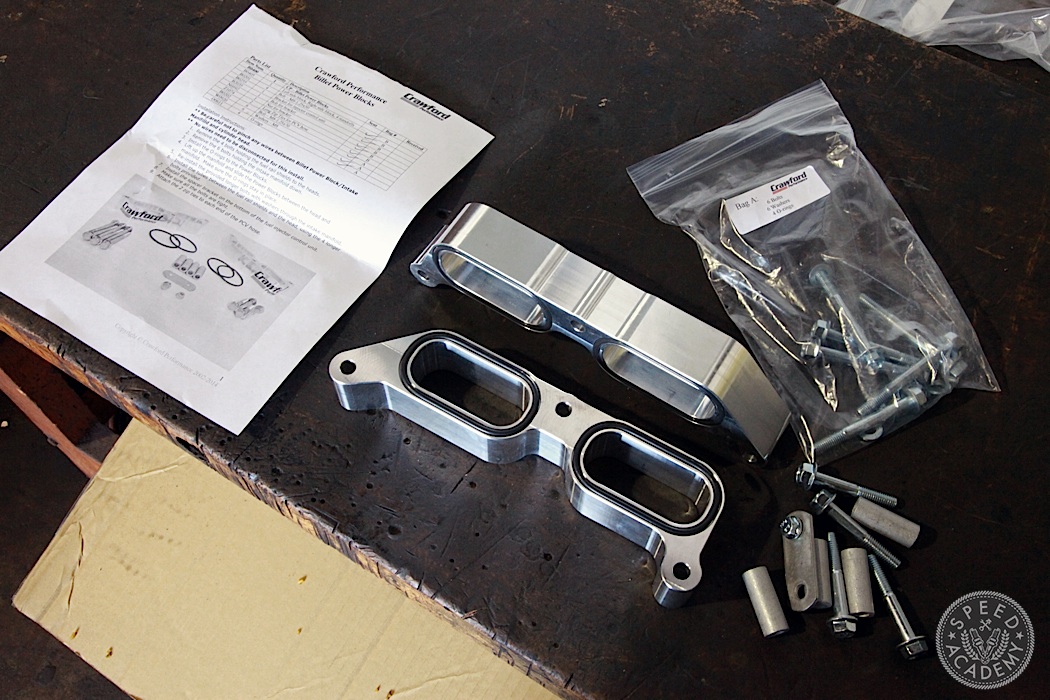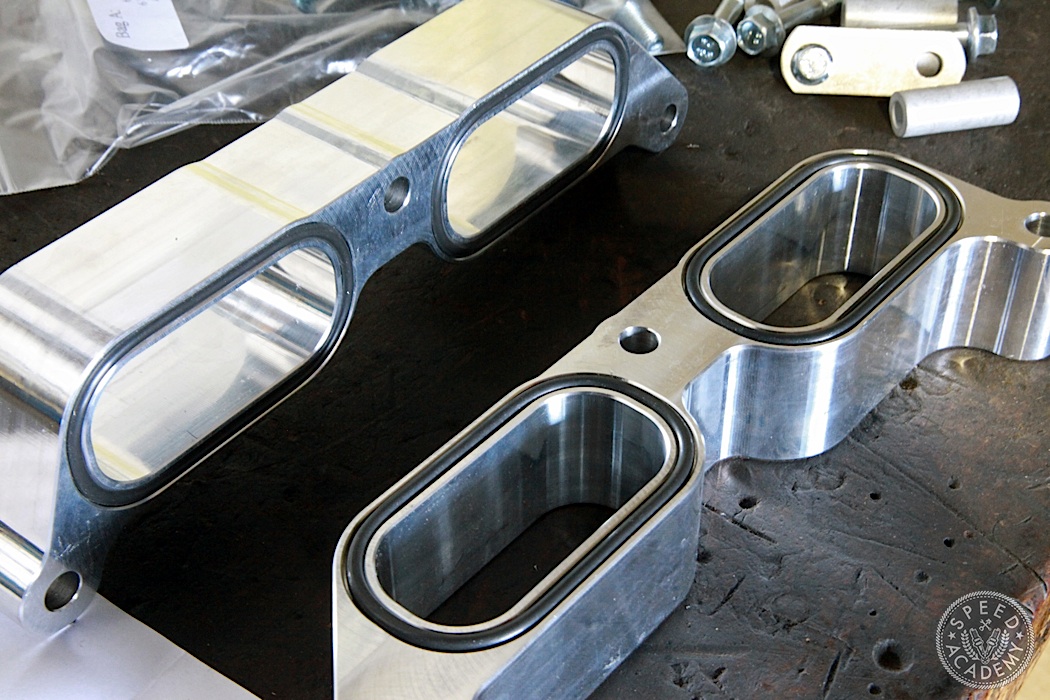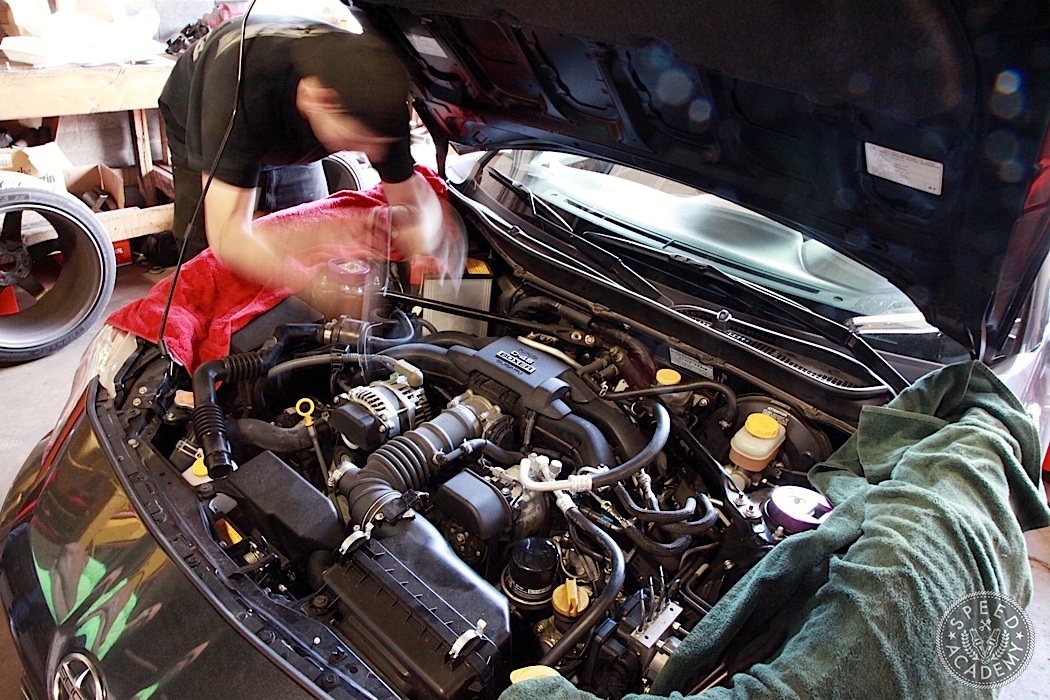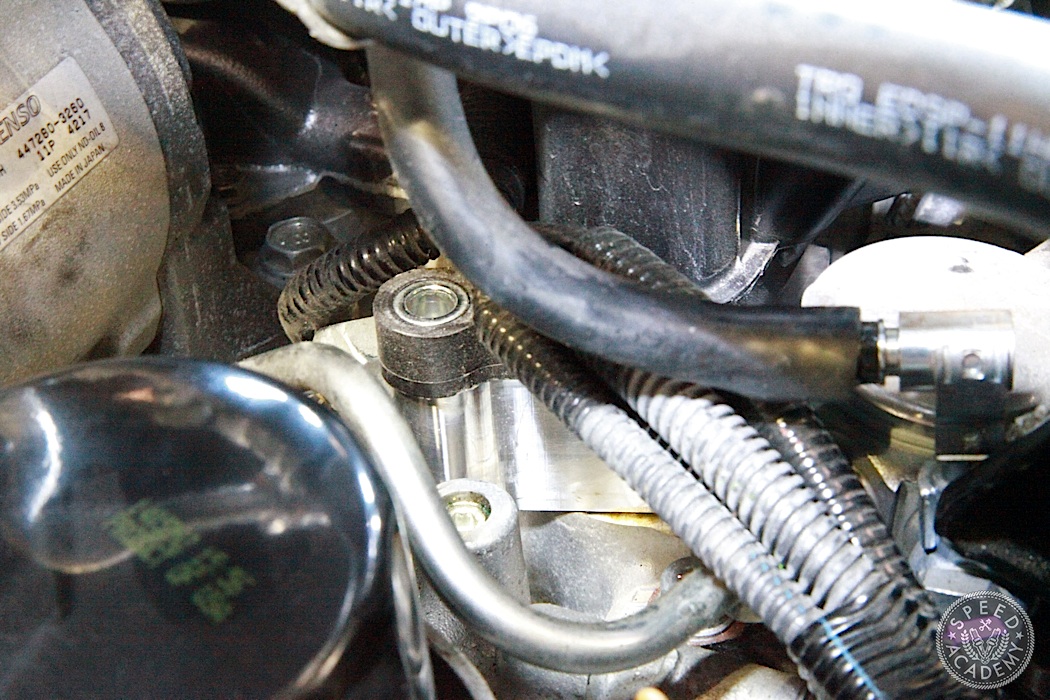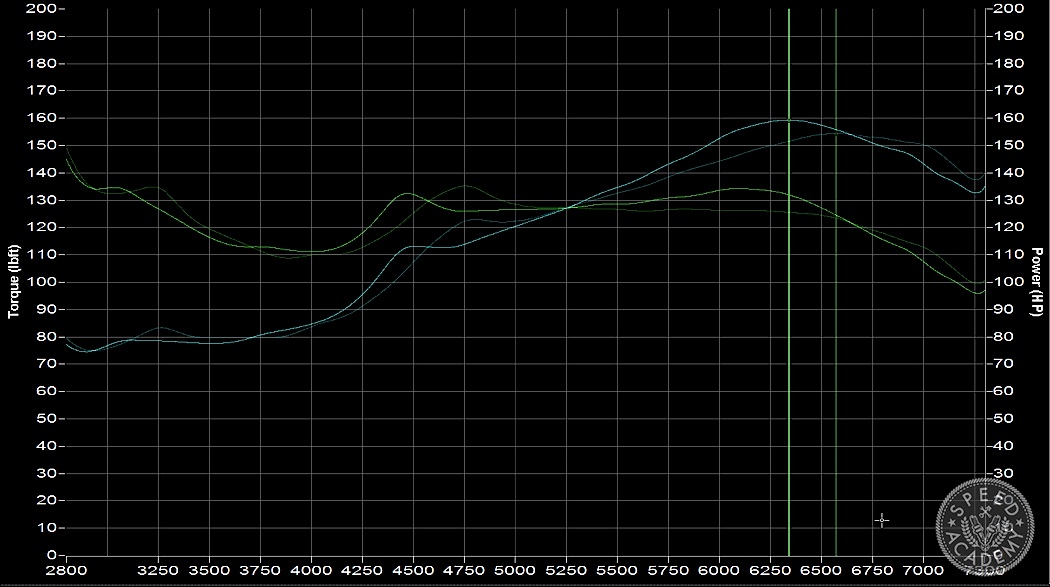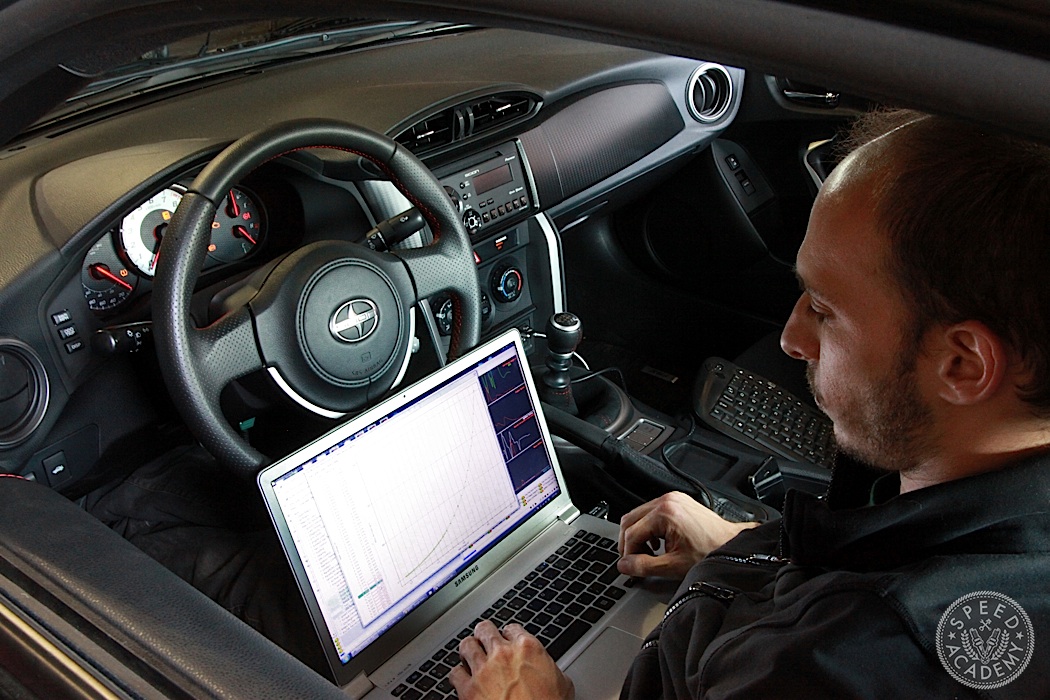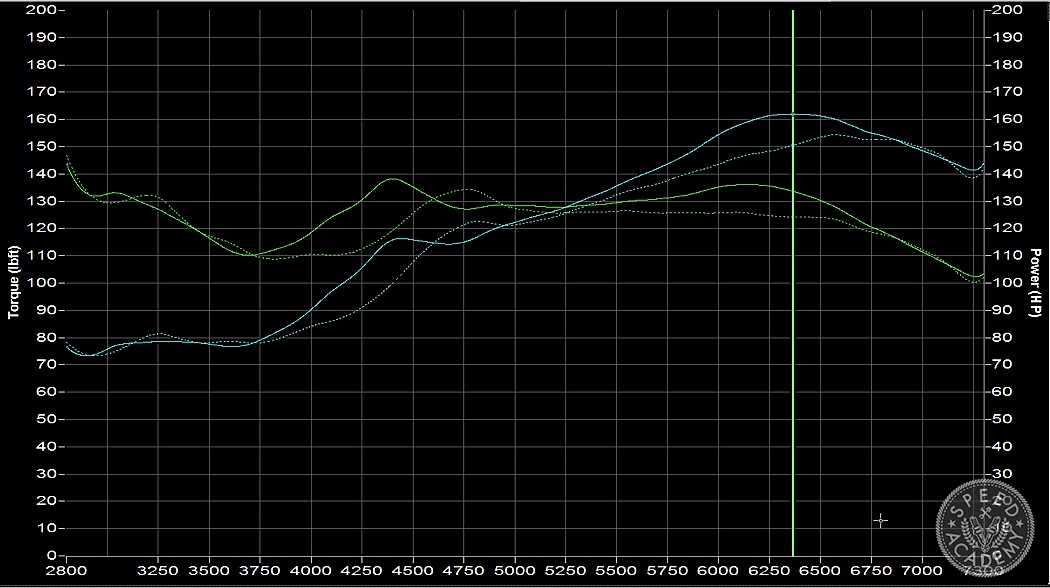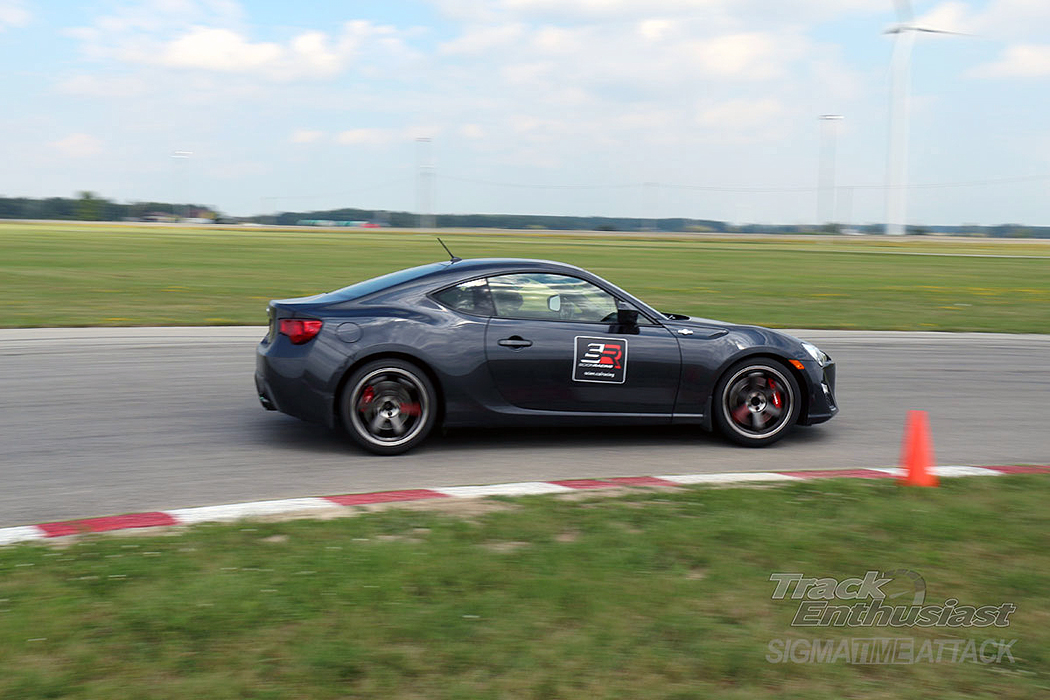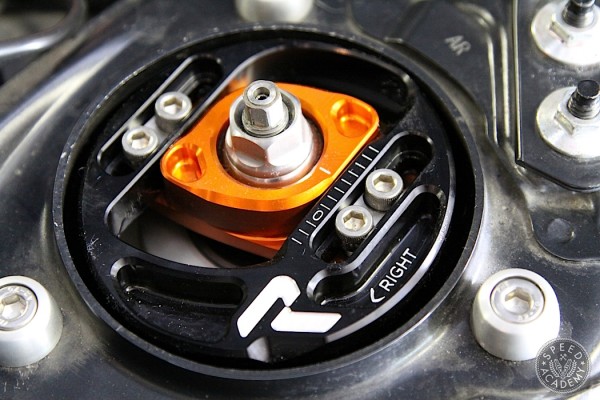With the exhaust work complete, it was time to install the Crawford Performance billet power blocks. These billet aluminum spacers go between the cylinder heads and the intake manifold, lengthen the intake manifold runners by over an inch in the process and thus increasing air intake volumetric capacity. As you probably know, increasing volume on the intake side generally has the effect of increasing low to mid-range torque, but at the cost of top end power. In dyno-speak, this means shifting the power curve to the left, so that peak torque and peak power happen sooner in the rev range. This may sound like a buzzkill for those of you who live your life at 7,400 RPM, but for street driving or even autocrossing or time attack, having more power available earlier is never a bad thing.
Part of the beauty of the Crawford BPBs is their simplicity. These beautifully finished billet pieces come complete with all the hardware required for a quick and easy installation that took Pat Cyr no more than half an hour. Simply undo a few clips and lines, remove the direct injector driver box, and then remove the bolts that fasten the manifold to the heads, lift them up the inch or so required to slip the BPBs into place, refasten with the supplied longer bolts, reinstall the driver box with the supplied bracket, and Bob’s your uncle. Just be sure that the o-rings don’t fall out of the spacers when installing them or you’ll have a serious vacuum leak on your hands.
We had a bit of a strange snafu during the installation, where the clip to one of the coil packs came loose, and it really wasn’t anywhere close to where we were working. We didn’t notice until the first dyno run with the BPBs installed, when the car sounded like it was running on 3-cylinder, because it was. Not a big deal, except it threw a CEL that we had to clear, which meant all the learning the ECU had done prior to this test was gone. So we don’t really know if the initial numbers we saw with the BPBs reflect their true potential, since the ECU was back in learning mode where it pulls back some ignition advance to be on the safe side. In any case, here’s how the power curves moved with the BPBs in place. Not as big a peak HP gain as some others have seen, but still a nice 5-whp gain peak-to-peak and some really solid area-under-the-curve gains from 5,300 RPM to 6,600 RPM, right in the meatiest part of the power band. We also saw the expected shifting to the left of both the HP and TQ curves, meaning more power is now available earlier in the rev range. And as an added bonus, the infamous mid-range torque dip is now a bit shallower and a bit narrower.
With the Crawford BPBs and Corsa exhaust in place, now it was time for Sasha from OnPoint Dyno to work his magic with the Ecutek software. Typically Sasha has been able to pick up around 10-whp at peak and lots of sexy mid-range gains to go with it, not to mention dialling out some more of the aforementioned torque dip by adjusting the cam timing. The resulting gains weren’t as large as we’ve seen on other FR-S’s Sasha has tuned for us with Ecutek’s package, and we’re assuming this is a combination of the ECU reset holding back some ignition advance, plus there’s the fact that every engine responds a little differently. Oh, and Mike only had 91-octane in the tank, when the other FR-S’s we’ve dyne tested all had 94-octane onboard (in Canada, the shop manual specifies 93-octane minimum for max engine output). Still, if you look at our starting baseline vs where we ended up after the Corsa exhaust, Crawford BPBs and the OnPoint custom tune, the gains are substantial. Sasha really attacked the torque dip from 3,750 RPM to 4,600 RPM and turned that frown upside down, plus he livened up the top end power quite a bit too. All in all, despite the snafu with the coil plug coming loose, the end results are really quite impressive. Yes, the peak HP number isn’t what we’ve seen on other FR-S’s tuned by Sasha, but peak numbers aren’t the most important indicator of engine performance. What matters most is area-under-the-curve gains, and in that respect we saw some very significant improvement.
Confirming that area-under-the-curve delivers faster lap times, Mike competed at Sigma Time Attack about a month after this tuning session (with 94-octane in the tank!) and bested his previous lap time at Toronto Motorsports Park by over half a second (1:23.49 as compared to his previous best of 1:24.16), so even though we didn’t see big peak HP gains on the dyno, out in the real world the Corsa exhaust, Crawford BPBs, and Ecutek tune were working very well. In fact, Mike won his class and took home some sweet contingency money ($350) from Scion Racing Canada. That’s what we call free racing, kids, and THAT is the best thing in the world.
